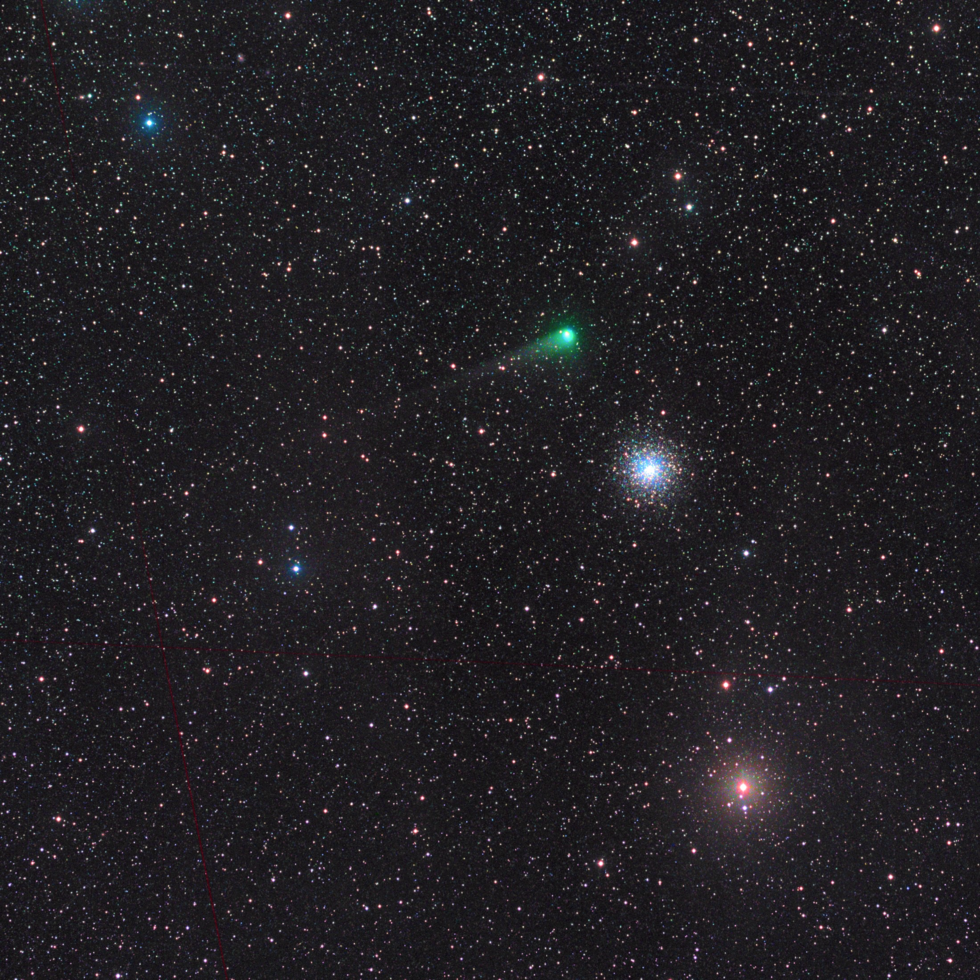Comet C/2017 K2 Passes M10
Comet C/2017 K2 Passes M10
Comet C-2017 K2 may not be visible to observers without a telescope, but it is shaping up to be the best comet of this summer!
The coma, or head, of the comet measuring almost 130,000 kilometers across, is nearly 10 times the diameter of the Earth, while the tail stretches nearly 800,000 kilometers in length - long enough to wrap around the Earth 20 times.
The "dirty snowball" at the heart of Comet C/2017 K2 could measure as much as 18 kilometers across - roughly twice the height of the second-highest mountain on Earth - also named K2.
C/2017 K2 made its closest approach to Earth on 14 July, passing a comfortable 277 million miles from our home planet. This body should make its closest approach to the Sun on 19 December.
This comet is thought to have traveled around three million years from the outskirts of the Solar System toward its current jaunt through the inner solar system.
Although Comet C/2017 K2 is particularly bright, it is also quite far from Earth, meaning it will not be visible to humans without the use of a telescope.
Comet C/2017 K2 is seen here on the night of 15 July, seen "close" to the globular cluster M10.
This cluster of stars, first spotted by astronomer Charles Messier in 1764, sits roughly 15,000 light years from Earth. While stars in most globular clusters were thought to all be roughly the same age, M10 is home to both young and old stars.
Composite image from The Cosmic Companion created from 10 red, green, blue, and mono images recorded over 30 minutes on 15 July by the 10cm SPA-3 telescope in Spain, from Telescope Live.
The coma, or head, of the comet measuring almost 130,000 kilometers across, is nearly 10 times the diameter of the Earth, while the tail stretches nearly 800,000 kilometers in length - long enough to wrap around the Earth 20 times.
The "dirty snowball" at the heart of Comet C/2017 K2 could measure as much as 18 kilometers across - roughly twice the height of the second-highest mountain on Earth - also named K2.
C/2017 K2 made its closest approach to Earth on 14 July, passing a comfortable 277 million miles from our home planet. This body should make its closest approach to the Sun on 19 December.
This comet is thought to have traveled around three million years from the outskirts of the Solar System toward its current jaunt through the inner solar system.
Although Comet C/2017 K2 is particularly bright, it is also quite far from Earth, meaning it will not be visible to humans without the use of a telescope.
Comet C/2017 K2 is seen here on the night of 15 July, seen "close" to the globular cluster M10.
This cluster of stars, first spotted by astronomer Charles Messier in 1764, sits roughly 15,000 light years from Earth. While stars in most globular clusters were thought to all be roughly the same age, M10 is home to both young and old stars.
Composite image from The Cosmic Companion created from 10 red, green, blue, and mono images recorded over 30 minutes on 15 July by the 10cm SPA-3 telescope in Spain, from Telescope Live.
SPECIFICATIONS
Telescope
SPA-3
Camera
FLI PL16083
Location
IC Astronomy Observatory, Spain
Date of observation
15 July 2022
Filters
LRGB
Processing
APP, BeFunky
Credits
James Maynard


